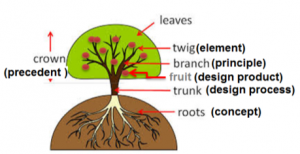Proxemics – a buzz word?
Proxemics and Pandemics. Two words with spatial-cultural implications. Edward T. Hall was a cultural anthropologist who coined the term proxemics in 1963. He defined proxemics as “the interrelated observations and theories of humans’ use of space as a specialized elaboration of culture”.
A case for personal space
Personal space is the region surrounding a person regarded as psychologically theirs. This is because, people value their personal space feeling discomfort, anger, or anxiety when their personal space is encroached. However, this can extend beyond personal space to possessions such as road rage as a result of vehicular personal space encroachment.

Proxemics is the branch of knowledge that deals with the amount of space that people feel it necessary to set between themselves and others. In addition, it looks at the effects that population density has on behaviour, communication, and social interaction.
Proxemics Introduced
I first came across the term proxemics in my freshman year in College. It was because I had a reading assignment in freshman studio. We had to read Hall‘s 1966 book The Hidden Dimension. I remember struggling through the reading until I discovered firsthand what it means to define personal space.
The Culture of Space

As a teenager from Nigeria, the personal space boundaries with my secondary school friends were smaller than the boundaries with my American friends. This created offense as they often told me “Aig, back off!”. However, over the years I subconsciously imbibed American personal space boundaries. I didn’t realise it until I returned to Nigeria and found myself telling my friends to “back off”. They were invading my personal space.
Formal Studies on space boundaries
Similarly, in formal studies, personal space boundaries vary from 1200 -1270 mm in countries like Romania, and Saudi Arabia. Boundaries are less than 900 mm in countries like Argentina, and Bulgaria. Today, the issues of personal space have become even more important in the face of COVID-19. The medical authorities now recommend social distancing.

Densities and Outbreaks
Since the 20th century, Pandemics have emerged from densely populated areas like Asia. An exception is the Spanish Flu (emergence unknown, but first reported in US military camp) of 1918. The milder Asian flu of 1957-58 and the Hong Kong flu of 1968 for instance, were named for their areas of origin.
Relatively high density settlements compounded the spread of The Bubonic plague that ravaged Europe in the 15th century. Studies have revealed that higher population densities actually aid in the spread of diseases. Therefore social distancing is a useful way of mitigating the spread of disease at onset.
Proxemics and Radial Distances
Hall described the interpersonal distances of man (the relative distances between people) in four distinct zones. The zones are intimate space, personal space, social space, and public space. Radial distances are horizontal. The radial distance surrounding a person forms a space.
The closest distance for embracing, touching or whispering is the intimate distance. The close phase is 10-20 mm. The far phase is 150 -460 mm. The personal distance is for interactions among family and close friends. The close phase is 460- 760 mm. The far phase is 760- 1220 mm.
Likewise, Social (radial) distance is for interactions among acquaintances. The close phase is 1200 – 2100 mm. The far phase is 2100 – 3700 mm. In addition, the public distance for public speaking in a close phase of 3700 – 7600 mm. The far phase of > 7600 mm.
Safe Distances and COVID-19
Maintaining basic acceptable distances differ depending on culture and relationship. With COVID-19, authorities recommend keeping people in the social zone or maintaining social distances. Social distances are the minimum distance (1000 mm) that individual’s should maintain to prevent possible transmission of the virus. The recommended social distance loosely corresponds with the close phase of social distance (1200 – 2100 mm). These distances are recommended by World Health Organisation, WHO because it is believed that the virus is spread by droplet transmission.

What is in a name?
Available information recommends social distancing as a means of preventing the spread of COVID-19. However, the use of term in this context is inappropriate. Social distance loosely suggests the distances between family and close friends. The current application of the term suggests social isolation.
Physical Distance is the term now adopted by the Nigerian Centre for Disease Control, NCDC. Social distances refer to the psychological comfort we derive from such a distance. Physical distances refers to the recommended safe distances we maintain between two or more parties or between an individual and possible pathogens and sources.
Aerosol Transmission? what if?
Is COVID-19 spread by droplets or by aerosols? So far studies have examined protective measured to address aerosol transmission of the virus in the intubation of infected patients. But little is known about the activities of the virus particles in the air. It will take scientists a while to study the nature and transmission of this novel corona virus. But can we afford to wait to be proved right or wrong? Just as there seems to be a sudden case for the use of face masks unlike the earlier directives that only infected people should use masks, and N95 masks at that! This change in policy is necessary since so many people are asymptomatic and very few tests are available.

Anthropometrics and Design Implications
Perhaps architects should make a case for yet another term in the prevention of the spread of COVID-19. Volumetric distances will take into account not just the horizontal, but the vertical and cubic distances that should be observed between persons. For instance we should know what distance to keep while climbing stairs, ramps? What volume of space is acceptable for multiple habitations? Volumetric distancing will also take into account the air volume to be maintained in the case of possible aerosol transmission.
Acceptable Distances
We have a responsibility to consider these possibilities, so as to err on the side of safety. Just as in foundation design we have the Allowable Bearing Capacity for soil, we should anticipate the acceptable volumetric distances, not just to safeguard against the possibility that COVID-19 is actually a airborne disease, but also to provide a foundation to mitigate the effects of future airborne pandemics.






Phenomenal!
Thank you big Sis
Thank you so very much Dr.
Very interesting and enlightening read!
Good Blog.
Thank you for your kind comments
👏👏👏
Thank you for your kind response